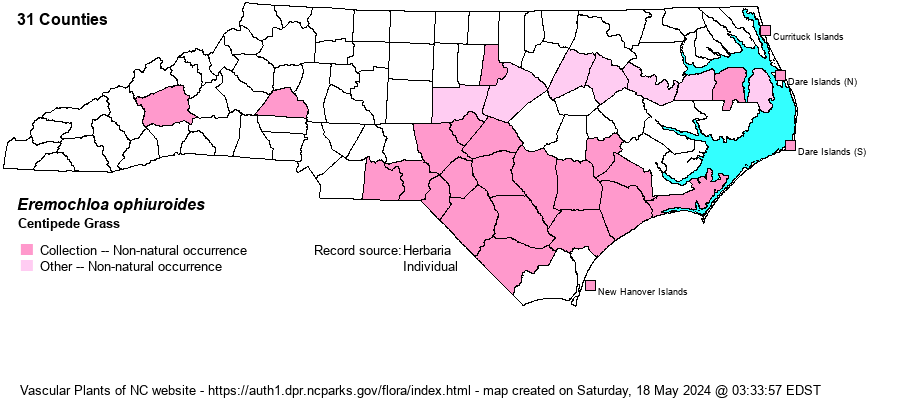| Author | (Munro) Hackel | |
| Distribution | Mostly the Coastal Plain and Sandhills; rare westward. Expected in other counties. Specimens from Orange County were of planted material at the Soil Conservation Service nursery, Chapel Hill, in 1941. The light pink counties from Wake County and eastward are all from a single trip on US 64.
Native in Asia; in N.A. southeastern VA-TN-AR south to FL and TX. | |
| Abundance | Common as a roadside plant, some or possibly most populations may have been originally planted with seed mixes. Alternatively, many populations may be adventive/escapes from lawn plantings. Since 1990 it appears to be rapidly spreading. | |
| Habitat | Roadsides and median strips, lawns, campuses; almost always where mown. This species was introduced to NC as a lawn grass in the 1930s-40s. | |
| Phenology | Flowering and fruiting August-October (November). | |
| Identification | The main stems of Centipede Grass creep along the ground and root at many nodes; these stems may reach 2-4 feet long and are branched so that plants form patches or mats. Erect, narrow, flowering stems grow less than a foot tall, terminated by a skinny inflorescence that is red-tinged or chestnut color. | |
| Taxonomic Comments | | |
| Other Common Name(s) | | |
| State Rank | SE | |
| Global Rank | GNR | |
| State Status | | |
| US Status | | |
| USACE-agcp | | |
| USACE-emp | | |

